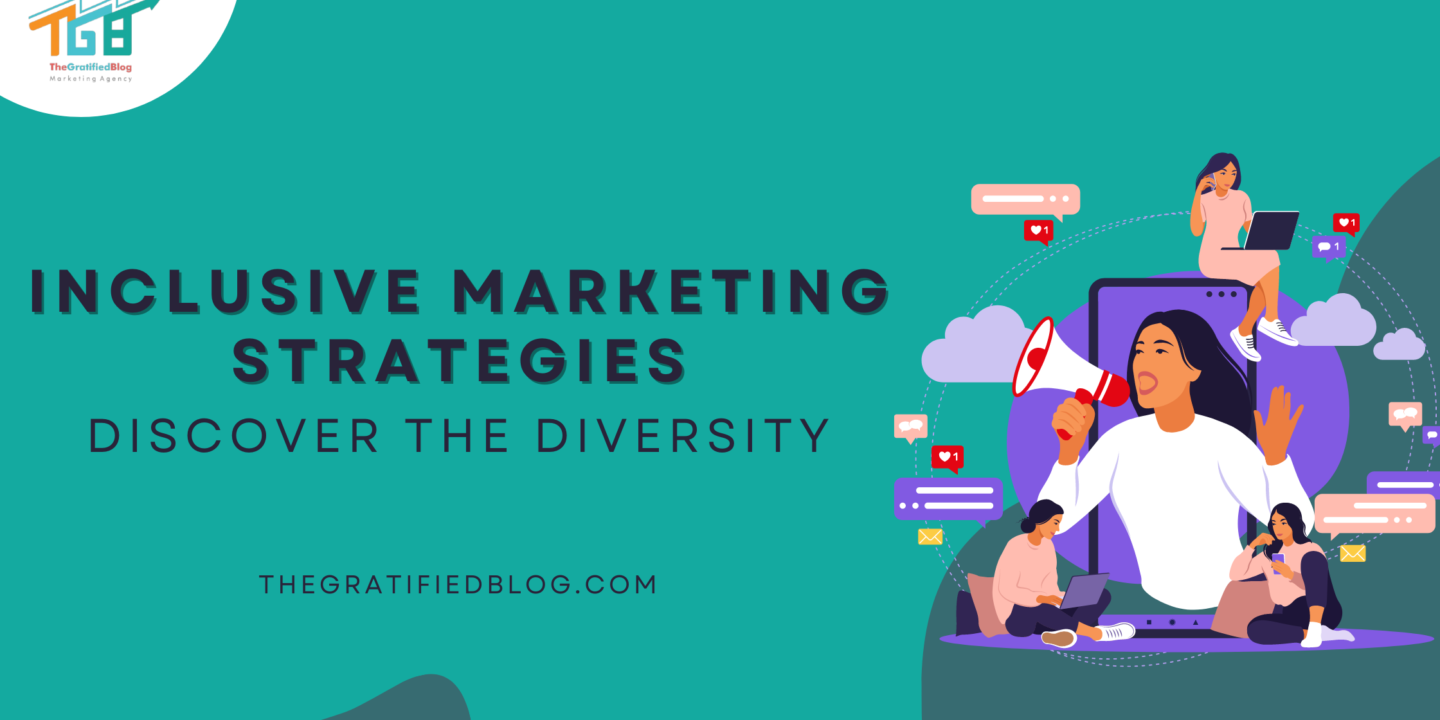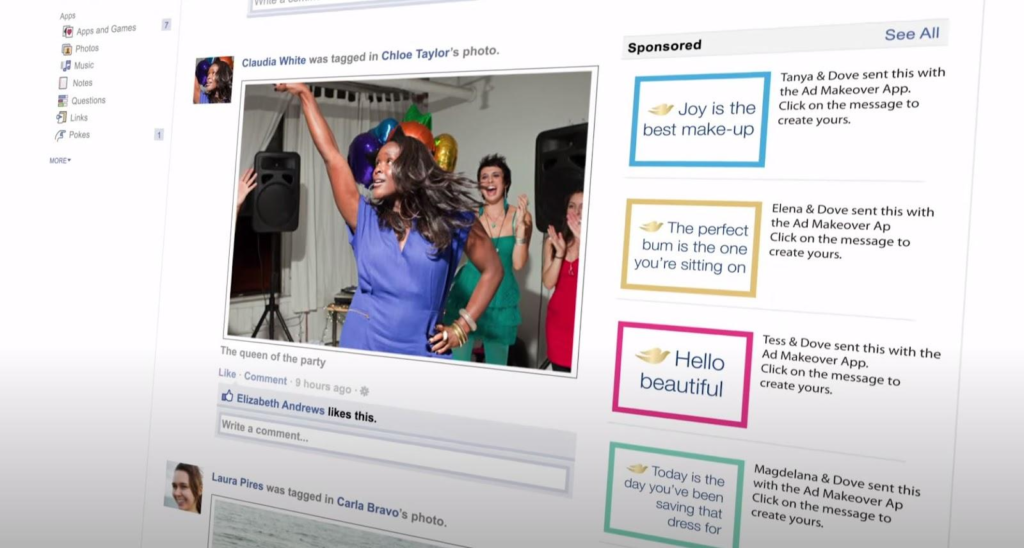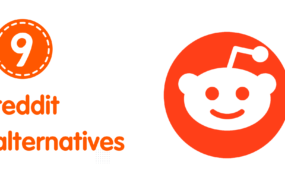
In today’s dynamic and interconnected business landscape, “inclusive marketing” Has become a crucial tactic for brands striving to create meaningful connections with diverse audiences. At its core, inclusive marketing is about embracing and celebrating diversity in all its forms within marketing campaigns, communications, and brand initiatives. It goes beyond mere representation to foster genuine inclusivity, accessibility, and cultural sensitivity.
As businesses manoeuvre through the intricacies of a worldwide market and diverse consumer base, the importance of inclusive marketing cannot be overstated. So, This blog delves deep into inclusive marketing, exploring its definition, significance, benefits, best practices, and examples.
So, Come along as we explore the profound power of inclusive marketing in fostering brand loyalty, driving engagement, and shaping positive social change.
What Is Inclusive Marketing?
Inclusive marketing is a strategic approach to creating marketing campaigns, content, and experiences that resonate with diverse audiences. It goes beyond traditional marketing strategies by actively including and representing people from various backgrounds, cultures, abilities, genders, ages, and identities.
At its core, inclusive marketing acknowledges and celebrates diversity, ensuring everyone feels valued, respected, and included in the brand’s messaging and outreach efforts. This approach requires businesses to embrace inclusivity as a checkbox exercise and as a fundamental aspect of their brand ethos and marketing strategies.
Benefits Of Inclusive Marketing
- Improved Brand Reputation and Loyalty: Inclusive marketing Conveys a strong message of embracing and including, which resonates positively with consumers. When brands demonstrate a genuine commitment to diversity and representation, they build trust and credibility among diverse audiences. This, in turn, leads to an improved brand reputation and fosters long-term brand loyalty. Consumers tend to back and champion brands that resonate with their inclusivity and social responsibility values.
- Increased Market Reach and Audience Engagement:- By embracing inclusivity in marketing, brands can expand their market reach to diverse demographic segments. When marketing campaigns are inclusive and relatable to different cultural, ethnic, and social groups, they are more likely to capture the attention and engagement of a broader audience. Inclusive marketing allows brands to connect with previously underserved or marginalised communities, tapping into new markets and expanding their customer base.
- Positive Impact on Sales and Revenue: It directly influences sales and revenue generation. When brands effectively engage with diverse audiences through inclusive campaigns, they create opportunities for increased sales. Consumers are inclined to purchase from brands that understand and respect their diversity. Studies have shown that businesses that prioritise inclusivity in their marketing strategies often experience higher sales growth and revenue streams compared to those that do not prioritise diversity.
- Enhanced Innovation and Creativity in Marketing Campaigns: Embracing diversity and inclusivity in marketing fosters a culture of innovation and creativity within organisations. Marketers can develop innovative and impactful strategies by incorporating diverse perspectives, experiences, and ideas into their campaigns. Inclusive marketing encourages thinking outside the box and exploring new ways to connect with diverse audiences. This leads to compelling and authentic marketing content that resonates deeply with consumers, driving engagement and brand affinity.
- Strengthened Customer Relationships: Inclusive marketing is crucial in building strong and meaningful customer relationships. When brands demonstrate inclusivity in their messaging and actions, they value and respect their customers’ diverse identities and backgrounds. This fosters a sense of belonging and connection, leading to deeper emotional bonds between the brand and its audience. Strong customer relationships increase customer retention, repeat business, and positive word-of-mouth referrals.
- Competitive Advantage: In today’s competitive market, brands prioritising inclusive marketing gain a significant competitive advantage. By embracing diversity and inclusivity, brands differentiate themselves from rivals and make a lasting impression on consumers. A reputation for inclusivity can become a critical differentiator that attracts customers who prioritise supporting inclusive and socially responsible brands. This competitive advantage translates into sustainable business growth and market leadership over time.
Now that you’re familiar with inclusive marketing and its advantages let’s examine its essential components.
Critical Elements Of Inclusive Marketing
- Diversity Representation: This element focuses on representing a wide range of diversity in marketing materials, including ethnicity, gender, age, body type, ability, sexual orientation, and more. It involves using diverse models, actors, and spokespersons in advertisements, showcasing diverse lifestyles and experiences, and ensuring that marketing content reflects the diverse demographics of the target audience.
- Accessibility: Accessibility in inclusive marketing refers to making marketing content and communication channels accessible to everyone, including people with disabilities. That includes using alt text for images to describe visual content for screen readers, providing closed captions for videos, ensuring websites and digital platforms are navigable with assistive technologies, and using accessible formats for print materials.
- Cultural Sensitivity: Cultural sensitivity entails respecting cultural differences, customs, traditions, and values when creating marketing campaigns. It involves avoiding stereotypes, cultural appropriation, or offensive imagery/language and embracing cultural diversity and inclusivity. Brands must conduct artistic research and consult with diverse communities to ensure their marketing efforts are culturally sensitive and relevant.
- Language Considerations: Language considerations involve using inclusive and affirming language in marketing communications. This includes avoiding biased or discriminatory language, using gender-neutral terms where appropriate, and being mindful of how language can impact different cultural and linguistic groups. Brands should also consider language accessibility for non-native speakers and provide translations or multilingual content when targeting diverse markets.
- Tone: The tone of inclusive marketing should be inclusive, welcoming, and respectful. It should reflect empathy, understanding, and acceptance of diverse perspectives and experiences. The tone should be positive, empowering, and celebratory of diversity, fostering a sense of inclusivity and belonging among the target audience. Avoiding language or messaging that could be exclusionary or alienating is essential in maintaining an inclusive tone.
- Images and Visuals: Visual elements play a significant role in inclusive marketing. Brands should use pictures and visuals that reflect diversity and inclusivity, showcasing people from various backgrounds, cultures, abilities, and identities. This includes using authentic and diverse imagery in advertising, social media posts, website banners, and other visual content. Visual representation should be inclusive and relatable to the target audience, promoting inclusivity and diversity in visual storytelling.
Best Practices For Implementing Inclusive Marketing
Understanding And Segmentation Of Diverse Audiences
Conducting thorough audience research involves delving into your target audience’s diverse demographics, preferences, and behaviours. Segmenting this audience based on age, gender, ethnicity, location, and interests enables the creation of tailored marketing strategies that resonate with different segments. This approach ensures inclusivity by addressing diverse audience groups’ needs and interests, fostering deeper connections and engagement.
Incorporating Inclusive Language And Visuals
Inclusive marketing entails using respectful, inclusive language devoid of stereotypes, gender-specific terms, or cultural biases. This practice extends to leveraging visuals representing diverse backgrounds, cultures, abilities, and identities. By incorporating diversity in both language and imagery, brands create a welcoming and inclusive environment for all audiences, promoting authenticity and relatability.
Collaboration With Diverse Communities And Influencers
Partnering with diverse communities and influencers allows brands to engage with diverse audiences authentically. This collaboration provides valuable insights, feedback, and support for inclusive marketing initiatives.
Working with influencers from diverse backgrounds amplifies messages, reaching new audience segments who relate to and trust these influencers. Collaborations with community organisations and advocacy groups strengthen brand connections and promote inclusivity in marketing efforts.
Examples Of Inclusive Marketing
Dove Nails’s Body-Positive Messaging
Dove took action when it discovered that only 4% of women viewed themselves as beautiful. They launched The Ad Makeover on Facebook, allowing users to replace negative ads with positive messages promoting self-worth.

This initiative is part of Dove’s broader Self-Esteem Project, offering educational resources on body positivity for parents, teachers, and youth. Dove collaborates with influencers who share stories on Instagram, shedding light on the harmful impact of societal beauty standards.
Their branded hashtags like #LetsChangeBeauty and #DoveSelfEsteemProject amplify these messages, encouraging empowerment and authentic self-expression among their audience through user-generated content.
Coca-Cola Brings Together Individuals From Diverse Races And Ethnic Backgrounds
In 1971, Coca-Cola boldly moved with its “Hilltop” commercial, featuring the iconic “I’d Like to Buy the World a Coke” jingle. This ad united young individuals from underrepresented groups, promoting unity and peace amidst global challenges like intergenerational conflict and social unrest.

Despite the turbulent times of the Civil Rights Movement and the Vietnam War, the ad’s simplicity and optimism resonated, garnering immense praise with over 100,000 letters of appreciation. Coca-Cola’s recent campaigns continue this inclusive approach, highlighting diverse voices without centring solely on their backgrounds.
For instance, a recent IG reel showcased a black Paralympian medalist sharing a message of living in the present, reflecting the brand’s ongoing commitment to inclusivity and authenticity.
Maybelline Celebrates Pride Month
In recent years, makeup brands like Maybelline have prioritised inclusivity to address the global demand for diverse skin tones. For instance, Maybelline expanded its Fit Me foundation line with 16 new shades, catering to a broader range of skin tones.

Beyond skin tones, the brand actively celebrates diversity on social media, such as during Pride month, where it featured LGBTQ+ NYC icons on Instagram and tagged diverse influencers and ambassadors. This approach highlights and uplifts creators without appropriating their voices, contributing to a more inclusive and authentic brand image.
Additionally, Maybelline strategically includes tags for makeup products designed for darker skin tones or those celebrating specific communities, like their #superstaymatteink liquid lipstick post. This boosts product visibility and benefits both the creators and the brand, inspiring other customers to experiment with the products and post their experiences on social media using these hashtags.
Conclusion
Given your understanding of inclusive marketing’s benefits for other brands, why not leverage this potent strategy for your ventures? The growth and impact potential is substantial when you make inclusivity a cornerstone of your marketing approach.
However, if you still have any questions related to the blog, please feel free to leave them in the comment section below. We will be happy to answer them.
Thanks for reading 🙂








No Comments